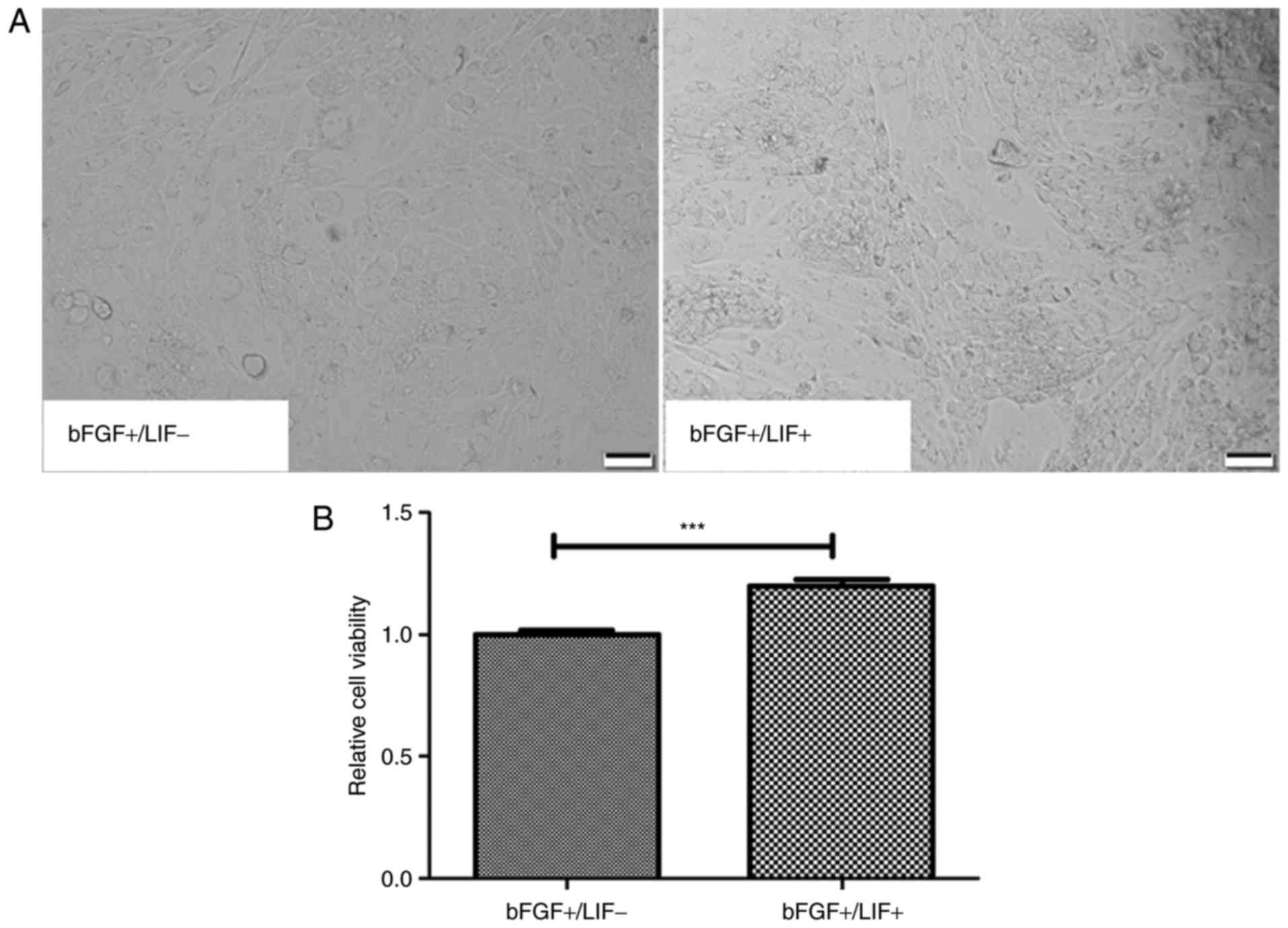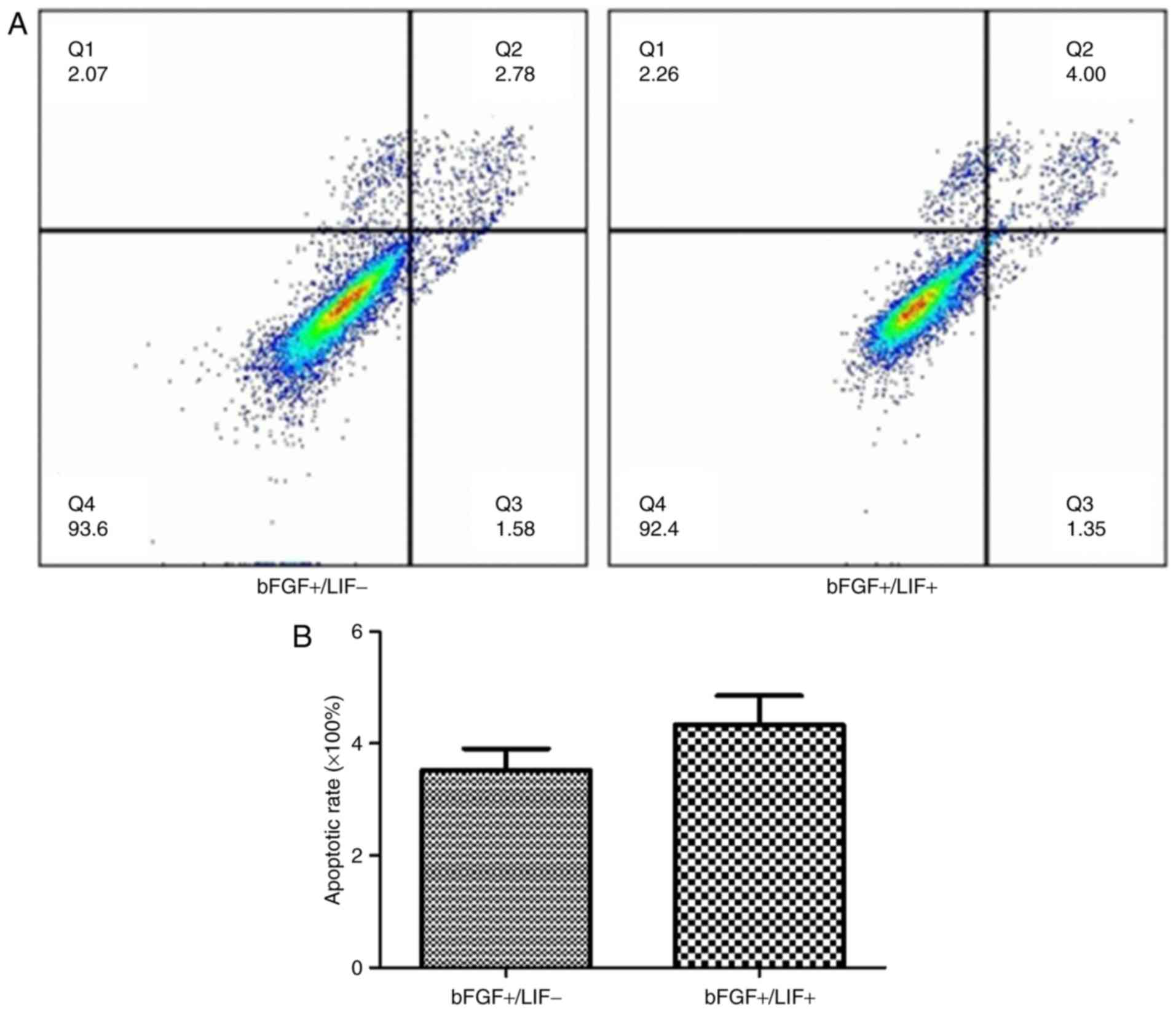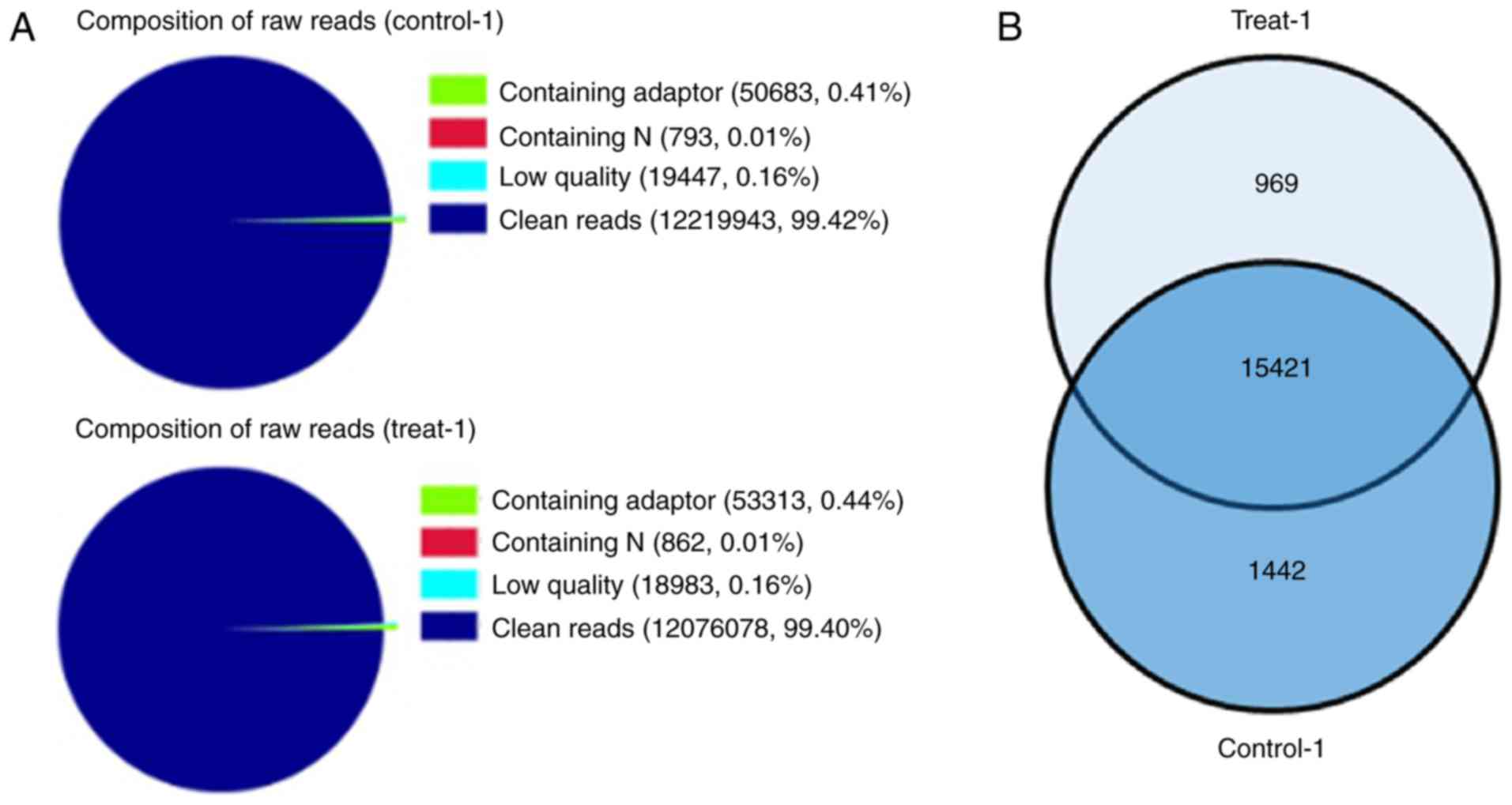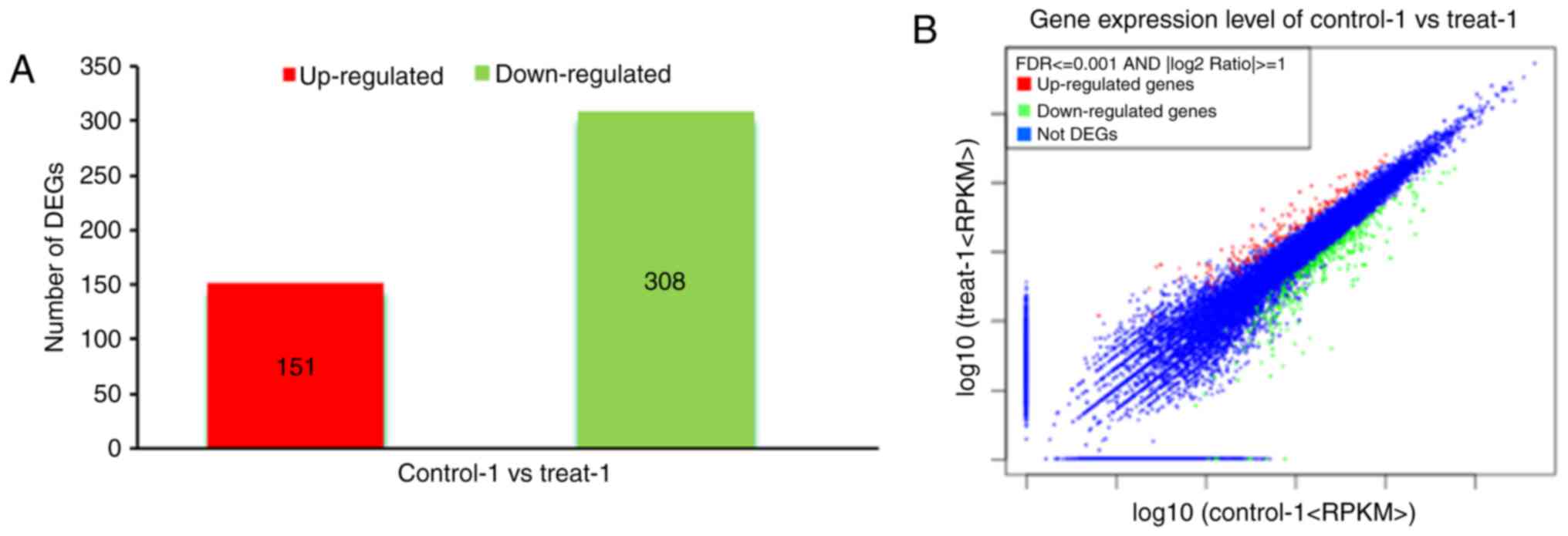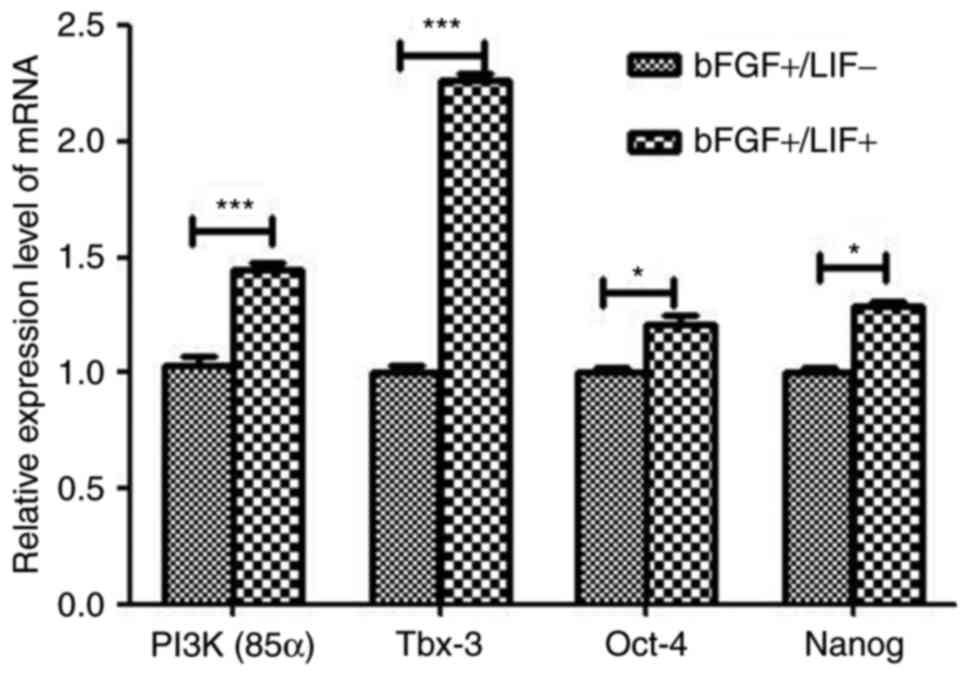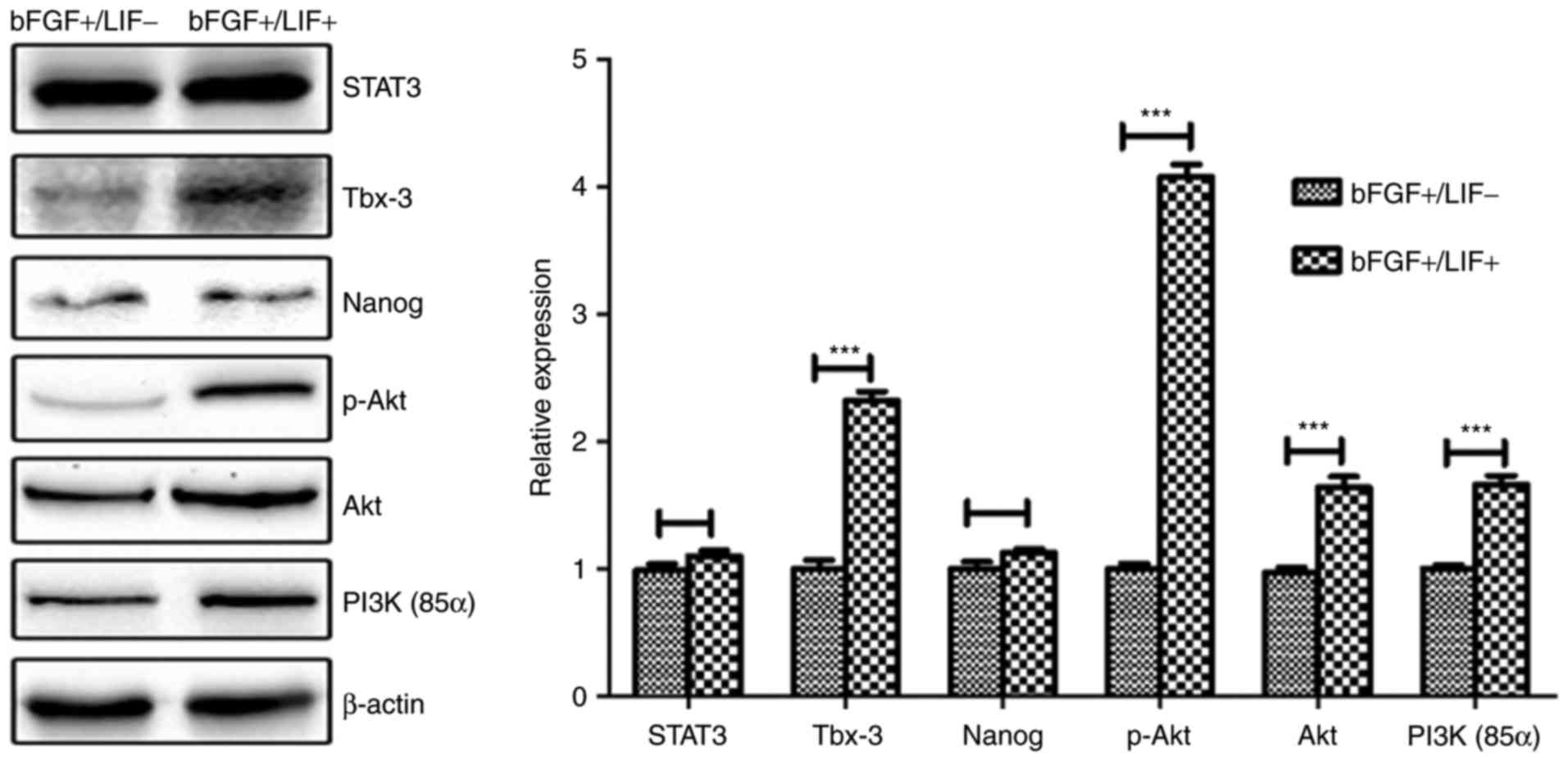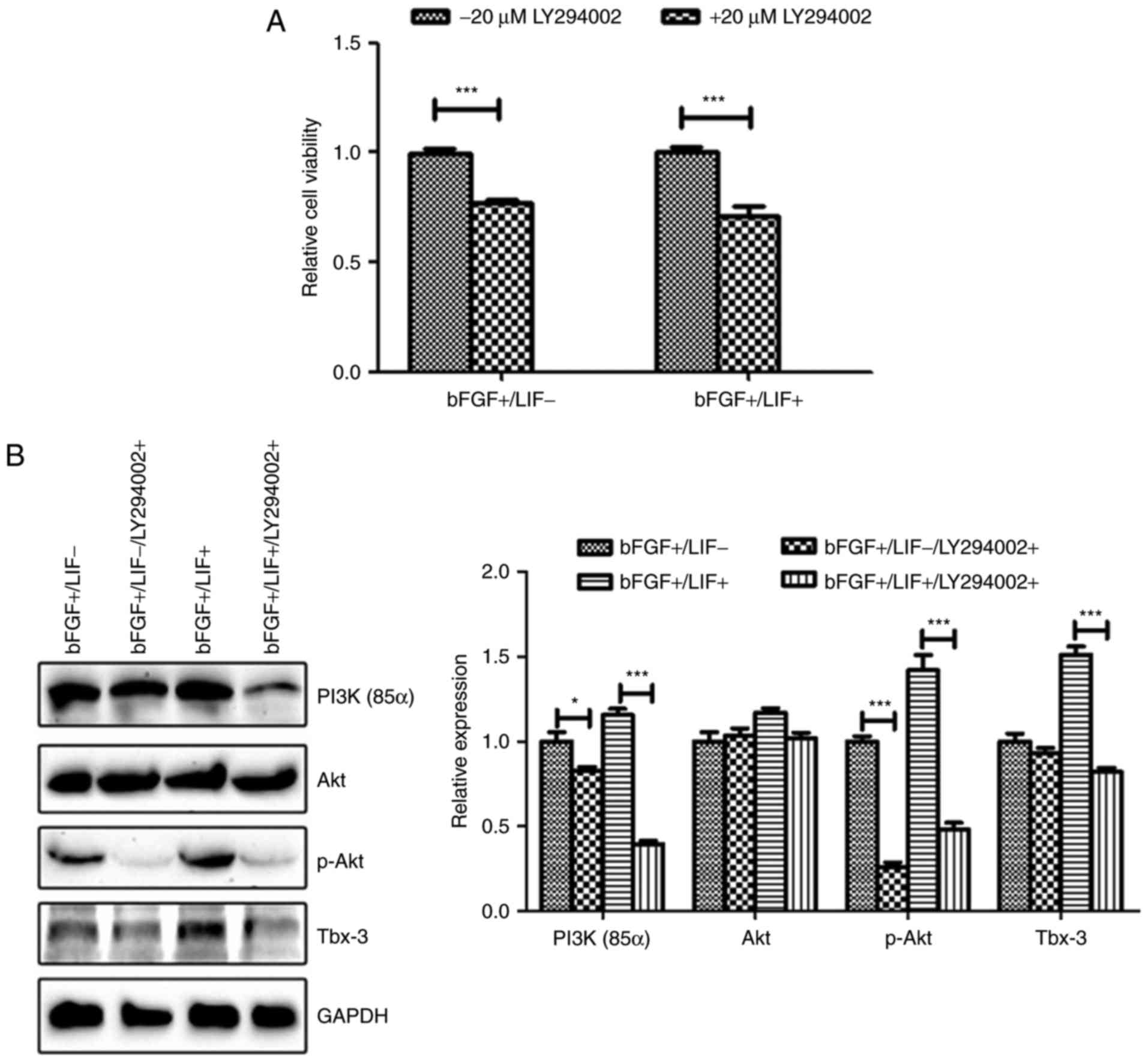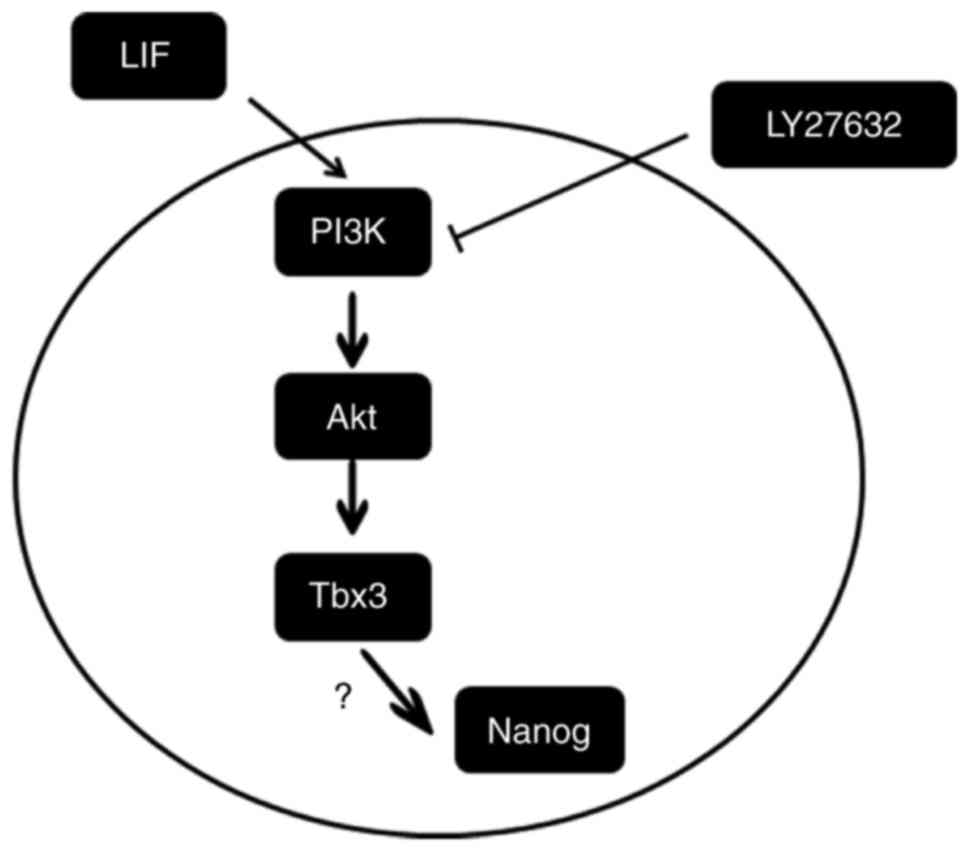|
1
|
De Vos J, Bouckenheimer J, Sansac C,
Lemaître JM and Assou S: Human induced pluripotent stem cells: A
disruptive innovation. Curr Res Transl Med. 64:91–96. 2016.
View Article : Google Scholar : PubMed/NCBI
|
|
2
|
Wu Y, Mishra A, Qiu Z, Farnsworth S,
Tardif SD and Hornsby PJ: Nonhuman primate induced pluripotent stem
cells in regenerative medicine. Stem Cells Int. 2012:7671952012.
View Article : Google Scholar : PubMed/NCBI
|
|
3
|
Thomson JA, Kalishman J, Golos TG, Durning
M, Harris CP and Hearn JP: Pluripotent cell lines derived from
common marmoset (Callithrix jacchus) blastocysts. Biol Reprod.
55:254–259. 1996. View Article : Google Scholar : PubMed/NCBI
|
|
4
|
Sasaki E, Hanazawa K, Kurita R, Akatsuka
A, Yoshizaki T, Ishii H, Tanioka Y, Ohnishi Y, Suemizu H, Sugawara
A, et al: Establishment of novel embryonic stem cell lines derived
from the common marmoset (Callithrix jacchus). Stem Cells.
23:1304–1313. 2005. View Article : Google Scholar : PubMed/NCBI
|
|
5
|
Müller T, Fleischmann G, Eildermann K,
Mätz-Rensing K, Horn PA, Sasaki E and Behr R: A novel embryonic
stem cell line derived from the common marmoset monkey (Callithrix
jacchus) exhibiting germ cell-like characteristics. Hum Reprod.
24:1359–1372. 2009. View Article : Google Scholar : PubMed/NCBI
|
|
6
|
Nii T, Marumoto T, Kawano H, Yamaguchi S,
Liao J, Okada M, Sasaki E, Miura Y and Tani K: Analysis of
essential pathways for self-renewal in common marmoset embryonic
stem cells. FEBS Open Bio. 4:213–219. 2014. View Article : Google Scholar : PubMed/NCBI
|
|
7
|
Wu Y, Zhang Y, Mishra A, Tardif SD and
Hornsby PJ: Generation of induced pluripotent stem cells from
newborn marmoset skin fibroblasts. Stem Cell Res. 4:180–188. 2010.
View Article : Google Scholar : PubMed/NCBI
|
|
8
|
Debowski K, Warthemann R, Lentes J,
Salinas-Riester G, Dressel R, Langenstroth D, Gromoll J, Sasaki E
and Behr R: Non-viral generation of marmoset monkey iPS cells by a
six-factor-in-one-vector approach. PloS One. 10:e01184242015.
View Article : Google Scholar : PubMed/NCBI
|
|
9
|
Tomioka I, Maeda T, Shimada H, Kawai K,
Okada Y, Igarashi H, Oiwa R, Iwasaki T, Aoki M, Kimura T, et al:
Generating induced pluripotent stem cells from common marmoset
(Callithrix jacchus) fetal liver cells using defined factors,
including Lin28. Genes Cells. 15:959–969. 2010. View Article : Google Scholar : PubMed/NCBI
|
|
10
|
Wu Y, Shu J, He C, Li M, Wang Y, Ou W and
He Y: ROCK inhibitor Y27632 promotes proliferation and diminishes
apoptosis of marmoset induced pluripotent stem cells by suppressing
expression and activity of caspase 3. Theriogenology. 85:302–314.
2016. View Article : Google Scholar
|
|
11
|
Cullinan EB, Abbondanzo SJ, Anderson PS,
Pollard JW, Lessey BA and Stewart CL: Leukemia inhibitory factor
(LIF) and LIF receptor expression in human endometrium suggests a
potential autocrine/paracrine function in regulating embryo
implantation. Proc Natl Acad Sci USA. 93:3115–3120. 1996.
View Article : Google Scholar : PubMed/NCBI
|
|
12
|
Mathieu ME, Saucourt C, Mournetas V,
Gauthereau X, Thézé N, Praloran V, Thiébaud P and Boeuf H:
LIF-dependent signaling: New pieces in the Lego. Stem Cell Rev.
8:1–15. 2012. View Article : Google Scholar :
|
|
13
|
McKenzie RC and Szepietowski J: Cutaneous
leukemia inhibitory factor and its potential role in the
development of skin tumors. Dermatol Surg. 30:279–290.
2004.PubMed/NCBI
|
|
14
|
Gadient RA and Patterson PH: Leukemia
inhibitory factor, Interleukin 6, and other cytokines using the
GP130 transducing receptor: Roles in inflammation and injury. Stem
Cells. 17:127–137. 1999. View Article : Google Scholar : PubMed/NCBI
|
|
15
|
Zouein FA, Kurdi M and Booz GW: LIF and
the heart: Just another brick in the wall. Eur Cytokine Netw.
24:11–19. 2013.PubMed/NCBI
|
|
16
|
Ohtsuka S, Nakai-Futatsugi Y and Niwa H:
LIF signal in mouse embryonic stem cells. JAKSTAT.
4:e10865202015.PubMed/NCBI
|
|
17
|
Nicola NA and Babon JJ: Leukemia
inhibitory factor (LIF). Cytokine Growth Factor Rev. 26:533–544.
2015. View Article : Google Scholar : PubMed/NCBI
|
|
18
|
Niwa H, Ogawa K, Shimosato D and Adachi K:
A parallel circuit of LIF signalling pathways maintains
pluripotency of mouse ES cells. Nature. 460:118–122. 2009.
View Article : Google Scholar : PubMed/NCBI
|
|
19
|
Hanna JH, Saha K and Jaenisch R:
Pluripotency and cellular reprogramming: Facts, hypotheses,
unresolved issues. Cell. 143:508–525. 2010. View Article : Google Scholar : PubMed/NCBI
|
|
20
|
Hirai H, Firpo M and Kikyo N:
Establishment of LIF-dependent human iPS cells closely related to
basic FGF-dependent authentic iPS cells. PloS One. 7:e390222012.
View Article : Google Scholar : PubMed/NCBI
|
|
21
|
Tang LD, Wang XM, Jin FL, Qiu BL, Wu JH
and Ren SX: De novo sequencing-based transcriptome and digital gene
expression analysis reveals insecticide resistance-relevant genes
in De novo sequencing-based transcriptome and digital gene
expression analysis reveals insecticide resistance-relevant genes
in Propylaea japonica (Thunberg) (Coleoptea: Coccinellidae)
(Thunberg) (Coleoptea: Coccinellidae). PloS One. 9:e1009462014.
View Article : Google Scholar
|
|
22
|
Götz S, García-Gómez JM, Terol J, Williams
TD, Nagaraj SH, Nueda MJ, Robles M, Talón M, Dopazo J and Conesa A:
High-throughput functional annotation and data mining with the
Blast2GO suite. Nucleic Acids Res. 36:3420–3435. 2008. View Article : Google Scholar : PubMed/NCBI
|
|
23
|
Livak KJ and Schmittgen TD: Analysis of
relative gene expression data using real-time quantitative PCR and
the 2(-Delta Delta C(T)) method. Methods. 25:402–408. 2001.
View Article : Google Scholar
|
|
24
|
Yi F, Yang F, Liu X, Chen H, Ji T, Jiang
L, Wang X, Yang Z, Zhang LH, Ding X, et al: RNA-seq identified a
super-long intergenic transcript functioning in adipogenesis. RNA
Biol. 10:991–1001. 2013. View Article : Google Scholar : PubMed/NCBI
|
|
25
|
Tan G, Cheng L, Chen T, Yu L and Tan Y:
Foxm1 mediates LIF/Stat3-dependent self-renewal in mouse embryonic
stem cells and is essential for the generation of induced
pluripotent stem cells. PloS One. 9:e923042014. View Article : Google Scholar : PubMed/NCBI
|
|
26
|
Liu N, Lu M, Feng XM, Ma FX, Fang ZH, Tian
XM, Ren Q, Zhang L, Liu B, Huang PP, et al: Exogenous Nanog
alleviates but is insufficient to reverse embryonic stem cells
differentiation induced by PI3K signaling inhibition. J Cell
Biochem. 106:1041–1047. 2009. View Article : Google Scholar : PubMed/NCBI
|
|
27
|
Saito A: The marmoset as a model for the
study of primate parental behavior. Neurosci Res. 93:99–109. 2015.
View Article : Google Scholar : PubMed/NCBI
|
|
28
|
Buecker C and Geijsen N: Different flavors
of pluripotency, molecular mechanisms, and practical implications.
Cell Stem Cell. 7:559–564. 2010. View Article : Google Scholar : PubMed/NCBI
|
|
29
|
Nichols J and Smith A: Naive and primed
pluripotent states. Cell Stem Cell. 4:487–492. 2009. View Article : Google Scholar : PubMed/NCBI
|
|
30
|
Govoni KE, Linares GR, Chen ST,
Pourteymoor S and Mohan S: T-box 3 negatively regulates osteoblast
differentiation by inhibiting expression of osterix and runx2. J
Cell Biochem. 106:482–490. 2009. View Article : Google Scholar
|
|
31
|
Dan J, Li M, Yang J, Li J, Okuka M, Ye X
and Liu L: Roles for Tbx3 in regulation of two-cell state and
telomere elongation in mouse ES cells. Sci Rep. 3:34922013.
View Article : Google Scholar : PubMed/NCBI
|
|
32
|
Zhao D, Wu Y and Chen K: Tbx3 isoforms are
involved in pluripotency maintaining through distinct regulation of
Nanog transcriptional activity. Biochem Biophys Res Commun.
444:411–414. 2014. View Article : Google Scholar : PubMed/NCBI
|
|
33
|
Willmer T, Peres J, Mowla S, Abrahams A
and Prince S: The T-Box factor TBX3 is important in S-phase and is
regulated by c-Myc and cyclin A-CDK2. Cell Cycle. 14:3173–3183.
2015. View Article : Google Scholar : PubMed/NCBI
|
|
34
|
Willmer T, Hare S, Peres J and Prince S:
The T-box transcription factor TBX3 drives proliferation by direct
repression of the p21 (WAF1) cyclin-dependent kinase inhibitor.
Cell Div. 11:62016. View Article : Google Scholar
|
|
35
|
Han J, Yuan P, Yang H, Zhang J, Soh BS, Li
P, Lim SL, Cao S, Tay J, Orlov YL, et al: Tbx3 improves the
germ-line competency of induced pluripotent stem cells. Nature.
463:1096–1100. 2010. View Article : Google Scholar : PubMed/NCBI
|
|
36
|
Russell R, Ilg M, Lin Q, Wu G, Lechel A,
Bergmann W, Eiseler T, Linta L, Kumar PP, Klingenstein M, et al: A
dynamic role of TBX3 in the pluripotency circuitry. Stem Cell
Reports. 5:1155–1170. 2015. View Article : Google Scholar : PubMed/NCBI
|
|
37
|
Esmailpour T and Huang T: TBX3 promotes
human embryonic stem cell proliferation and neuroepithelial
differentiation in a differentiation stage-dependent manner. Stem
Cells. 30:2152–2163. 2012. View Article : Google Scholar : PubMed/NCBI
|
|
38
|
Ivanova N, Dobrin R, Lu R, Kotenko I,
Levorse J, DeCoste C, Schafer X, Lun Y and Lemischka IR: Dissecting
self-renewal in stem cells with RNA interference. Nature.
442:533–538. 2006. View Article : Google Scholar : PubMed/NCBI
|
|
39
|
Lu R, Yang A and Jin Y: Dual functions of
T-box 3 (Tbx3) in the control of self-renewal and extraembryonic
endoderm differentiation in mouse embryonic stem cells. J Biol
Chem. 286:8425–8436. 2011. View Article : Google Scholar :
|
|
40
|
Galan-Caridad JM, Harel S, Arenzana TL,
Hou ZE, Doetsch FK, Mirny LA and Reizis B: Zfx controls the
self-renewal of embryonic and hematopoietic stem cells. Cell.
129:345–357. 2007. View Article : Google Scholar : PubMed/NCBI
|
|
41
|
Storm MP, Kumpfmueller B, Thompson B,
Kolde R, Vilo J, Hummel O, Schulz H and Welham MJ: Characterization
of the phosphoinositide 3-kinase-dependent transcriptome in murine
embryonic stem cells: Identificatio n of novel regulators of
pluripotency. Stem Cells. 27:764–775. 2009. View Article : Google Scholar : PubMed/NCBI
|
|
42
|
Lee DF, Su J, Sevilla A, Gingold J,
Schaniel C and Lemischka IR: Combining competition assays with
genetic complementation strategies to dissect mouse embryonic stem
cell self-renewal and pluripotency. Nat Protoc. 7:729–748. 2012.
View Article : Google Scholar : PubMed/NCBI
|



